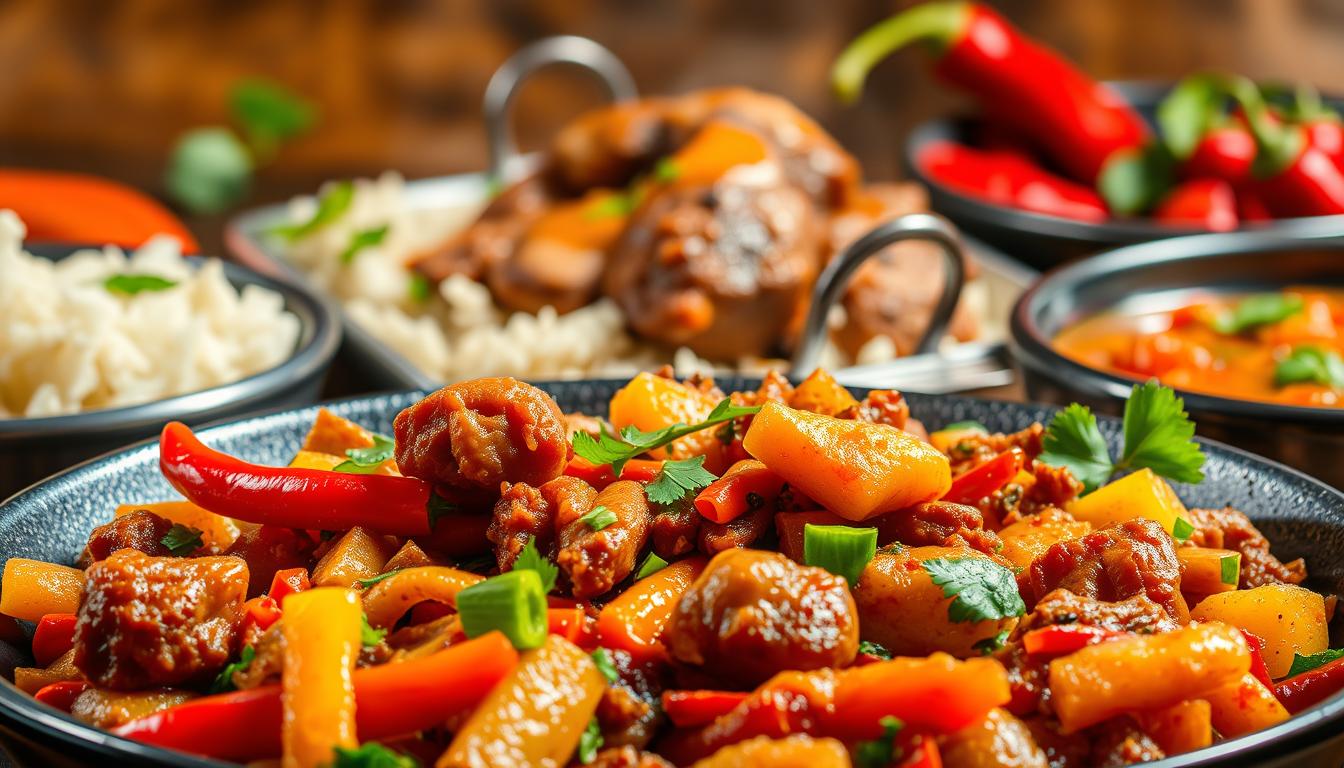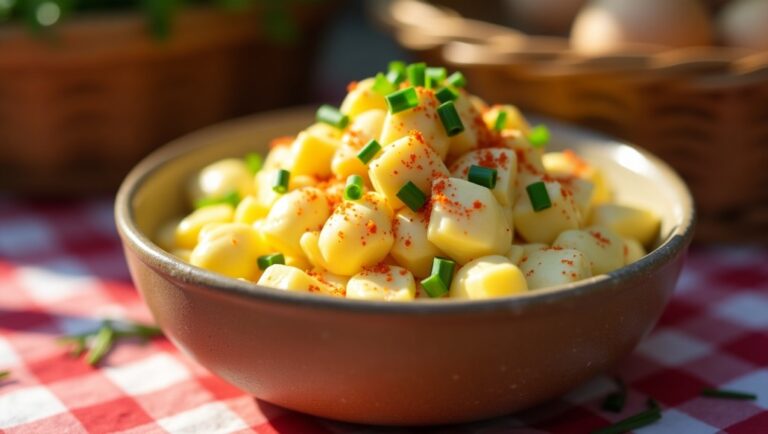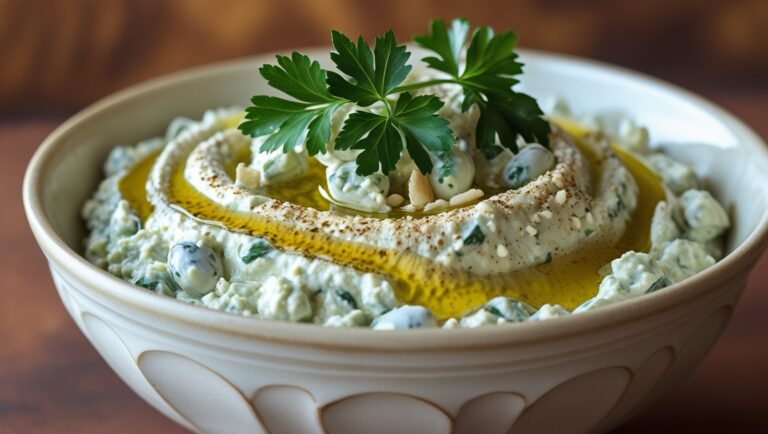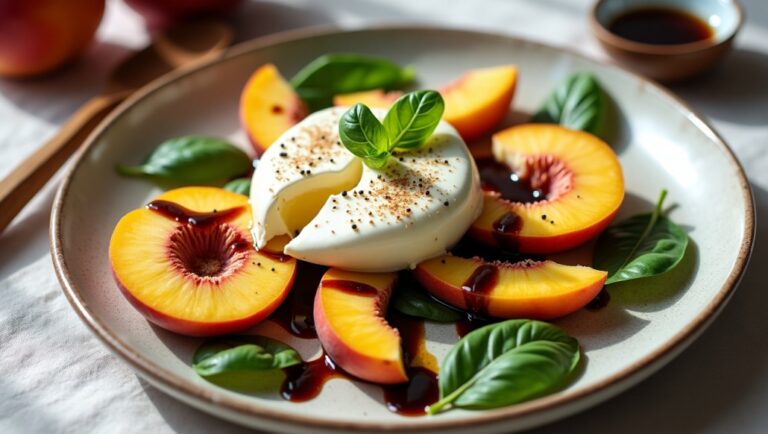Bold and Spicy Recipes: Flavorful Dishes
Are you ready to ignite your taste buds with vibrant flavors and zesty recipes? Bold and spicy dishes are not just about heat; they’re about the perfect blend of flavors that create a culinary experience like no other.

These flavorful dishes are designed to take you on a journey through a world of hot and bold flavors, where every bite is a delight. Whether you’re a seasoned chef or a culinary newbie, our collection of bold and spicy recipes is sure to inspire you to new gastronomic heights.
Key Takeaways
- Explore a variety of bold and spicy recipes.
- Discover the art of balancing heat and flavor.
- Find inspiration for your next culinary adventure.
- Learn how to create vibrant and zesty dishes.
- Enhance your cooking skills with hot and bold flavors.
The Appeal of Bold and Spicy Cuisine
The allure of bold and spicy cuisine lies in its ability to transform a meal into an adventure. For those who enjoy it, spicy food is more than just a flavor preference; it’s a way to experience a rich tapestry of cultures and traditions. Whether it’s the fiery kick of a hot pepper or the complex layers of spices in a curry, bold and spicy cuisine has a universal appeal that transcends borders.
The Science Behind Heat and Flavor
The science behind why we enjoy spicy food is fascinating. It’s not just about the sensation of heat; it’s about the complex interplay of chemicals and our brain’s response to them.
How Capsaicin Works
Capsaicin, the compound responsible for the heat in chili peppers, works by binding to receptors on our tongue, creating a burning sensation. Interestingly, this sensation can be both painful and pleasurable, depending on the individual.
Flavor Compounds in Spicy Foods
Spicy foods contain a variety of flavor compounds that contribute to their appeal. These compounds can enhance the overall flavor profile of a dish, making it more complex and interesting.
Health Benefits of Spicy Foods
Beyond their flavor, spicy foods also offer several health benefits. From boosting metabolism to reducing inflammation, the advantages of incorporating spicy dishes into your diet are numerous.
Metabolism and Weight Management
Capsaicin has been shown to increase metabolism and aid in weight management. This makes spicy foods a great addition to a weight loss diet.
Anti-inflammatory Properties
Many spices used in bold and spicy cuisine have anti-inflammatory properties. For example, turmeric contains curcumin, a compound known for its anti-inflammatory effects.
| Spice | Health Benefit | Common Use |
|---|---|---|
| Capsaicin | Boosts Metabolism | Chili Peppers |
| Curcumin | Anti-inflammatory | Turmeric |
| Ginger | Aids Digestion | Asian Cuisine |
Essential Spices for Bold and Flavorful Cooking
The key to preparing bold and spicy meals lies in understanding and utilizing the right spices. A well-stocked spice rack can elevate your dishes from ordinary to extraordinary. In this section, we’ll explore the must-have spices and ingredients that can add depth and heat to your cooking.
Dried Spices and Powders
Dried spices and powders are staples in any kitchen, providing a convenient way to add flavor and heat to dishes. They can be stored for long periods and used as needed.
Cayenne, Paprika, and Chili Powders
Cayenne pepper adds a sharp, intense heat, while paprika contributes a smoky sweetness. Chili powders blend various spices, including chili peppers, garlic, and cumin, creating a complex flavor profile. These powders are essential for adding depth and heat to dishes like chili, stews, and roasted vegetables.
Peppercorns and Ground Peppers
Peppercorns are a versatile spice that can be used whole or ground. They add a sharp, peppery flavor to dishes. Black peppercorns are the most common, but white peppercorns offer a milder taste. Grinding your own pepper ensures maximum flavor.
Fresh Peppers and Aromatics
Fresh peppers and aromatics are crucial for adding brightness and depth to bold and spicy dishes. They provide a freshness that dried spices can’t match.
Choosing and Handling Hot Peppers
When selecting hot peppers, look for firm, vibrant peppers. Handling hot peppers requires care, as the oils can cause skin irritation. Always wash your hands thoroughly after handling, and avoid touching your face or eyes.
Garlic, Ginger, and Other Flavor Enhancers
Garlic and ginger are fundamental aromatics that enhance the flavor of bold and spicy dishes. They can be used raw or cooked, and their flavor intensity varies based on preparation. Other aromatics like onions and shallots also play a crucial role in building complex flavors.
Global Spice Blends Worth Knowing
Global spice blends offer a convenient way to add complex flavors to your dishes. Blends like curry powder, Chinese five-spice, and berbere can add unique twists to your cooking. Experimenting with different blends can help you discover new flavors and inspiration.
| Spice Blend | Origin | Common Uses |
|---|---|---|
| Curry Powder | India | Curries, stews, soups |
| Chinese Five-Spice | China | Marinades, stir-fries, roasted meats |
| Berbere | Ethiopia | Stir-fries, stews, injera bread |
Building Your Bold and Spicy Pantry
The key to mastering bold and spicy dishes lies in having the right ingredients at your fingertips. Building a bold and spicy pantry is about more than just stocking up on hot peppers and spicy seasonings; it’s about creating a foundation that allows you to experiment with a variety of flavors and heat levels.
Must-Have Hot Sauces
Hot sauces are a staple in any bold and spicy pantry. They add a quick burst of heat and flavor to dishes, and there are countless varieties to choose from around the world.
American and Caribbean Varieties
American hot sauces, such as Frank’s RedHot, are known for their vinegar-based formulas, while Caribbean sauces often feature a blend of Scotch bonnet peppers and spices. Try using these in marinades or as a finishing sauce.
Asian and African Options
Asian hot sauces, like sriracha, offer a garlicky kick, whereas African sauces, such as peri-peri, bring a smoky heat. Experiment with these to add depth to your dishes.
Specialty Pastes and Condiments
Beyond hot sauces, specialty pastes and condiments play a crucial role in adding complexity to bold and spicy dishes.
Harissa, Gochujang, and Sambal
Harissa brings a North African flair with its blend of chili peppers and garlic. Gochujang, a Korean chili paste, adds a sweet and spicy dimension, while sambal, an Indonesian chili paste, offers a straightforward heat.
Chipotle in Adobo and Curry Pastes
Chipotle peppers in adobo sauce bring a smoky heat, perfect for BBQ and grilled meats. Curry pastes, whether Indian or Thai, add a rich, layered flavor that can be adjusted for heat.
| Ingredient | Origin | Flavor Profile |
|---|---|---|
| Harissa | North Africa | Chili peppers, garlic, coriander |
| Gochujang | Korea | Fermented soybeans, chili peppers, rice |
| Sambal | Indonesia | Chili peppers, sometimes garlic or anchovies |
Storage Tips for Maximum Flavor
To keep your bold and spicy pantry ingredients fresh and potent, proper storage is key. Store hot sauces and condiments in a cool, dark place, and always check the expiration dates.
“The art of cooking is not just about following a recipe; it’s about understanding the ingredients and their potential.”
Chef on Fire
For pastes and spices, airtight containers are essential to preserve flavor and prevent moisture from causing clumping or spoilage.

Fiery Appetizers to Kick Off Your Meal
Kick off your meal with a bang by serving fiery appetizers that will leave your guests craving for more. Fiery appetizers are a great way to add a thrilling twist to your meal, setting the tone for a memorable dining experience.

Spicy Buffalo Cauliflower Bites
Spicy buffalo cauliflower bites are a vegetarian delight that packs a punch. These bites are not only delicious but also easy to make.
Ingredients and Preparation
To make spicy buffalo cauliflower bites, you will need cauliflower, buffalo sauce, and a few other ingredients like flour and spices. Simply dip the cauliflower florets in the batter and bake until crispy, then toss in buffalo sauce.
Serving Suggestions
Serve the spicy buffalo cauliflower bites with a side of ranch or blue cheese dressing to cool down the heat. You can also garnish with chopped fresh herbs like parsley or cilantro.
Jalapeño Poppers with a Twist
Jalapeño poppers are a classic appetizer that can be given a creative twist with different fillings and cooking methods.
Classic vs. Creative Fillings
While traditional jalapeño poppers are filled with cream cheese, you can experiment with other fillings like cheddar cheese, bacon, or even shrimp. The key is to balance the heat of the jalapeño with the richness of the filling.
Baking vs. Frying Techniques
You can either bake or fry jalapeño poppers. Baking is a healthier option and can produce a crispy exterior, while frying gives a crunchier texture. Both methods have their advantages, and the choice depends on your preference.
Zesty Shrimp Skewers
Zesty shrimp skewers are a seafood lover’s delight, marinated in a mixture of spices and herbs that add a burst of flavor.
Marinade Options
You can marinate shrimp in a variety of mixtures, including citrus-based marinades or spicy blends with chili flakes and garlic.
Grilling Tips
When grilling shrimp skewers, make sure to preheat the grill to the right temperature and cook for just the right amount of time to avoid overcooking. Brushing with oil or butter during grilling can add extra flavor.
Bold and Spicy Main Dishes from Around the World
From Nashville to Bangkok and Mexico City, explore the boldest and spiciest main dishes that define global cuisine. These international recipes are not just meals; they’re experiences that combine heat, flavor, and culture.

Nashville Hot Chicken
Nashville Hot Chicken is a quintessential American dish known for its spicy kick and crispy exterior. This Southern favorite has gained national attention for its unique flavor profile.
The Perfect Spice Blend
Crafting the perfect spice blend is crucial for Nashville Hot Chicken. A mix of paprika, garlic powder, and cayenne pepper creates the signature heat and flavor.
Frying and Coating Techniques
The secret to Nashville Hot Chicken’s crispy exterior lies in its frying and coating techniques. A buttermilk marinade followed by a seasoned flour coating ensures a crunchy outside and juicy inside.
Fiery Thai Basil Stir-Fry
Thai cuisine offers a variety of bold and spicy dishes, with Thai Basil Stir-Fry being a standout. This quick and flavorful dish can be adapted with various proteins.
Protein Options and Preparation
Whether you prefer chicken, beef, or tofu, Thai Basil Stir-Fry is versatile. Marinating your protein of choice in a mixture of soy sauce, fish sauce, and chili flakes enhances the flavor.
Balancing Sweet, Sour, and Spicy
The key to a great Thai Basil Stir-Fry is balancing sweet, sour, and spicy elements. Palm sugar, lime juice, and Thai chilies come together to create a harmonious and aromatic sauce.
Spicy Mexican Pozole
Pozole, a traditional Mexican stew, is both hearty and flavorful. Spicy Mexican Pozole can be made with either red or green varieties, each offering a unique taste experience.
Red vs. Green Varieties
The choice between red and green pozole depends on your preference for red chili sauce or green tomatillo sauce. Both offer distinct flavors and heat levels.
Traditional Garnishes
Traditional garnishes for pozole include radishes, lime wedges, and shredded cabbage, adding freshness and crunch to the dish. These elements are crucial for balancing the richness of the stew.
Vibrant Side Dishes with a Kick
Vibrant side dishes with a spicy twist can add depth to any meal. These dishes not only complement the main course but also bring a burst of flavor and color to the table.
Chili-Lime Roasted Vegetables
Roasting vegetables with chili and lime is a simple way to add a vibrant touch to your meal. The combination of heat from the chili and the acidity from the lime creates a balanced flavor profile.
Best Vegetables for Roasting
The best vegetables for roasting include Brussels sprouts, carrots, and sweet potatoes. These vegetables hold their shape well when roasted and absorb flavors beautifully.
Seasoning Combinations
For an added layer of flavor, try combining chili powder, lime zest, and a sprinkle of cumin. This blend enhances the natural sweetness of the vegetables.
Spicy Garlic Noodles
Spicy garlic noodles are a quick and flavorful side dish that pairs well with a variety of main courses. The key is in the preparation of the garlic and the spice level.
Noodle Varieties and Cooking Methods
Rice noodles and udon noodles are excellent choices for this dish. Cook them al dente and toss with a spicy garlic sauce.
Sauce Preparation
The sauce is made by combining minced garlic, chili flakes, soy sauce, and a squeeze of fresh lime juice. Adjust the spice level to your liking.

Fiery Corn on the Cob
Fiery corn on the cob is a summer favorite with a spicy twist. It’s perfect for barbecues and outdoor gatherings.
Mexican Elote-Style
For a Mexican-inspired elote-style corn, slather with mayonnaise, cotija cheese, and chili powder. Add a squeeze of lime juice for extra flavor.
Asian-Inspired Variations
For an Asian-inspired version, try using soy sauce, sesame oil, and chili flakes. This gives the corn a savory and spicy kick.
Balancing Heat: Cooling Accompaniments
To enjoy bold and spicy recipes without the burn, you need the perfect cooling side dishes. Cooling accompaniments are essential for balancing the heat in spicy meals, providing a refreshing contrast that enhances the overall dining experience.

Creamy Yogurt-Based Sauces
Creamy yogurt-based sauces are a staple for cooling down spicy dishes. They offer a rich, creamy texture that helps neutralize the heat.
Raita and Tzatziki Variations
Raita and tzatziki are popular yogurt-based sauces with various regional twists. Raita, often flavored with cumin or coriander, is a common accompaniment in Indian cuisine, while tzatziki, made with cucumber and garlic, is a Greek favorite. “These sauces are not only delicious but also versatile, making them perfect for a variety of dishes.”
Herb-Infused Creams
Infusing yogurt with fresh herbs like dill, mint, or cilantro adds a refreshing twist to traditional sauces. These herb-infused creams can be used as dips or as toppings for spicy dishes, providing a cooling effect.
Refreshing Slaws and Salads
Refreshing slaws and salads are another great way to balance the heat. They are light, easy to make, and packed with fresh flavors.
Cucumber and Mint Combinations
Cucumber and mint make a classic combination that is both cooling and refreshing. This duo is often used in salads and slaws to provide a soothing contrast to spicy meals.
Citrus-Based Dressings
Citrus-based dressings, made with lemon or lime juice, add a bright, tangy flavor to salads and slaws. They help cut through the richness of spicy dishes, creating a balanced flavor profile.
Sweet Elements That Complement Heat
Sweet elements can also play a crucial role in balancing the heat in spicy dishes. They provide a contrasting flavor that can help neutralize the spiciness.
Fruit Salsas and Chutneys
Fruit salsas and chutneys, made with ingredients like mango, pineapple, or berries, add a sweet and tangy flavor. They are perfect for topping spicy dishes or using as dips.
Honey and Maple Glazes
Honey and maple glazes offer a sweet and sticky element that can complement spicy flavors. They are often used in glazes for meats or as toppings for spicy dishes, adding a rich, caramelized flavor.
By incorporating these cooling accompaniments into your meals, you can enjoy bold and spicy recipes without overwhelming your taste buds. As celebrity chef, Gordon Ramsay, once said, “The key to a great dish is balance.” Balancing heat with cooling elements is crucial for creating a harmonious and enjoyable dining experience.
Techniques for Controlling and Building Heat
Mastering the art of heat control is crucial for creating bold and spicy dishes that tantalize the taste buds. Whether you’re a seasoned chef or a culinary novice, understanding how to balance and adjust the heat in your cooking can elevate your dishes from merely good to extraordinary.
Layering Spices for Depth
Layering spices is a fundamental technique for building depth and complexity in spicy dishes. This involves adding spices at different stages of cooking to create a harmonious balance of flavors. By doing so, you can achieve a rich and nuanced heat that enhances the overall dining experience.
Blooming Spices in Oil
Blooming spices in oil is a technique that releases their essential oils, enhancing their flavor and aroma. This is typically done at the beginning of cooking. Blooming spices can significantly intensify the flavor profile of your dish.
Timing of Spice Addition
The timing of spice addition is critical. Adding spices too early can result in a loss of flavor, while adding them too late might not allow their flavors to meld properly with the dish. Finding the right balance is key to a well-layered dish.
Taming Excessive Heat
Sometimes, a dish can become too spicy. Knowing how to tame excessive heat is just as important as knowing how to build it. There are several strategies to help mitigate overly spicy dishes.
Dairy-Based Solutions
Dairy products like yogurt, milk, or cheese can help neutralize excessive heat due to their casein content, which binds to capsaicin, the compound that gives chili peppers their heat. Adding a dairy component can provide quick relief.
Acidic and Sweet Counterbalances
Adding acidic or sweet elements can also counterbalance heat. A squeeze of lemon or a bit of sugar can help temper the spiciness. This approach not only reduces heat but can also enhance the dish’s overall flavor.
Building Tolerance for Spicy Foods
For those who are new to spicy foods or find themselves sensitive to heat, building tolerance is a gradual process. It involves gradually exposing your palate to increasing levels of heat.
Gradual Exposure Methods
Gradually increasing exposure to spicy foods can help build tolerance. Start with mildly spicy dishes and gradually move to hotter ones. This method allows your palate to adjust without overwhelming it.
Cultural Approaches to Heat
Different cultures have their own approaches to dealing with spicy food, from the use of specific ingredients to traditional cooking methods. Exploring these cultural practices can provide valuable insights into managing heat. Learning from various cuisines can enrich your cooking repertoire.

Conclusion: Embracing the World of Bold Flavors
As we’ve explored throughout this article, bold and spicy cuisine offers a world of flavors that can elevate any meal. From the essential spices that add depth to our dishes to the techniques for controlling and building heat, we’ve covered the key elements to help you embark on a culinary journey.
By incorporating bold flavors into your cooking, you’re not only enhancing the taste of your meals but also exploring the rich diversity of global cuisines. Whether it’s the fiery kick of Nashville Hot Chicken or the vibrant zest of a well-made slaw, spicy food has the power to transform your dining experience.
As you continue to experiment with the recipes and techniques provided, remember that the art of cooking is all about balance and creativity. Don’t be afraid to try new ingredients, adjust the heat level to your liking, and pair bold flavors with cooling accompaniments to create a truly flavorful cuisine.
By embracing bold flavors, you’re opening yourself up to a world of culinary possibilities. So, go ahead, take the leap, and start cooking with confidence. Your taste buds will be grateful for the adventure.
FAQ
What are some essential spices for bold and flavorful cooking?
Essential spices include dried spices like cayenne, paprika, and chili powders, as well as peppercorns and ground peppers. Fresh peppers, garlic, ginger, and other aromatics also play a crucial role in adding depth to dishes.
How do I build a pantry for bold and spicy cooking?
Building a pantry involves stocking up on must-have hot sauces from around the world, such as American and Caribbean varieties, as well as Asian and African options. Specialty pastes and condiments like harissa, gochujang, and sambal are also essential. Don’t forget to store ingredients properly to preserve their flavor.
What are some techniques for controlling heat in spicy dishes?
Techniques include layering spices for depth by blooming them in oil and timing the addition of spices correctly. To tame excessive heat, dairy-based solutions, acidic ingredients, and sweet elements can be used to counterbalance the heat.
How can I make my dishes more flavorful with bold and spicy ingredients?
To add more flavor, experiment with global spice blends, use a variety of chili peppers, and incorporate aromatics like garlic and ginger. Don’t be afraid to try different hot sauces and specialty pastes to add a unique twist to your dishes.
Are there any health benefits to consuming spicy foods?
Yes, spicy foods have several health benefits, including boosting metabolism and weight management, as well as anti-inflammatory properties. The capsaicin in chili peppers is responsible for many of these benefits.
How can I balance the heat in spicy dishes with cooling accompaniments?
Cooling accompaniments like creamy yogurt-based sauces, refreshing slaws and salads, and sweet elements like fruit salsas and honey or maple glazes can provide a nice contrast to spicy dishes. Experiment with different combinations to find the perfect balance.
What are some popular bold and spicy main dishes from around the world?
Popular dishes include Nashville hot chicken, Thai basil stir-fry, and spicy Mexican pozole. These dishes showcase the diversity of bold and spicy cuisine and can be adapted to suit different tastes and preferences.
How can I build tolerance for spicy foods?
Building tolerance involves gradual exposure to increasingly spicy foods, as well as adopting cultural approaches to consuming heat. Start with mildly spicy dishes and gradually increase the heat level to build up your tolerance.






